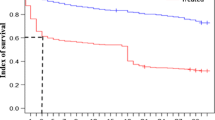Abstract
Demodex folliculorum and Demodex brevis are obligatory parasites of the pilosebaceous unit in humans and are cosmopolitan in terms of their distribution. This study was conducted to explore the effect of temperature on the viability of D. folliculorum and D. brevis. Both types of parasites were collected with the cellophane tape method, then randomly grouped and placed into separate moist cabinets. They were divided into 15 groups and exposed to experimental temperatures ranging from −15°C to 60°C. Curve diagrams and scatter plots on the relationship between temperature and the corresponding survival time were drawn and analyzed. It is demonstrated that temperature has a tremendous influence on the viability of D. folliculorum and D. brevis. Survival time and temperature are inversely correlated in the temperature range of 5–37°C. Both D. folliculorum and D. brevis can survive better at low temperatures than at high temperatures. The most suitable maintenance temperature is 5°C, and the optimal temperature for D. folliculorum and D. brevis to develop in vitro is 16–20°C. Temperatures below 0°C and above 37°C are harmful to the mites. The lethal temperature is 54°C, and the effective temperature that kills Demodex mites is 58°C.


Similar content being viewed by others
References
Anane S, Touzri RA, Malouche N, El Aich F, Beltaief O, Zhioua R (2007) Which is the role of parasites and yeasts in the genesis of chronic blepharitis? Pathol Biol 55:323–327
Chen GD (1985) Influence of some environmental factors on the survival of two human follicular mites. Acta Entomol Sin 28:75–78
Erbagci Z, Ozgoztasi O (1998) The significance of Demodex folliculorum density in rosacea. Int J Dermatol 37:421
Garcia-Vargas A, Mayorga-Rodriguez JA, Sandoval-Tress C (2007) Scalp demodicidosis mimicking favus in a 30-year-old boy. J Am Acad Dermatol 57:S19–S21
Georgala S, Katoulis AC, Kylafis GD, Koumantaki-Mathioudaki E, Goergala C, Aroni K (2001) Increased density of Demodex folliculorum and evidence of delayed hypersensitivity reaction in subjects with papulopustular rosacea. J Eur Acad Dermatol Venereol 15:441–444
Li YL (2004) Human parasitology, 6th edn. People’s Medical Publishong House, Beijing
Moravvej H, Dehghan M, Mohammad A, Meshkat-Razavi G (2007) Association of rosacea with demodicosis. Arch Iran Med 10:199–203
Powell FC (2004) Rosacea and the pilosebaceous follicle. Cutis 74:9–12 32–4
Wu GL (2005) Human parasitology, 3rd edn. People’s Medical Publishong House, Beijing, pp 1034–1039
Wu JW, Meng YC (1990) Laboratory studies on mobility and lifespan of demodectic mites. Acta Acad Med Suzhou 10:94–97
Zhao YE, Guo N, Zheng X (2005) Observations on morphology and the survival temperature range of Demodex folliculorum. Acta Entomol Sin 48:754–757
Acknowledgements
This work was supported by the National Natural Science Foundation of China (No.30872199) and the Natural Science Foundation of Shaanxi Province, China (No. 2006C247).
Author information
Authors and Affiliations
Corresponding author
Rights and permissions
About this article
Cite this article
Zhao, Y.E., Guo, N. & Wu, L.P. The effect of temperature on the viability of Demodex folliculorum and Demodex brevis . Parasitol Res 105, 1623–1628 (2009). https://doi.org/10.1007/s00436-009-1603-x
Received:
Accepted:
Published:
Issue Date:
DOI: https://doi.org/10.1007/s00436-009-1603-x




